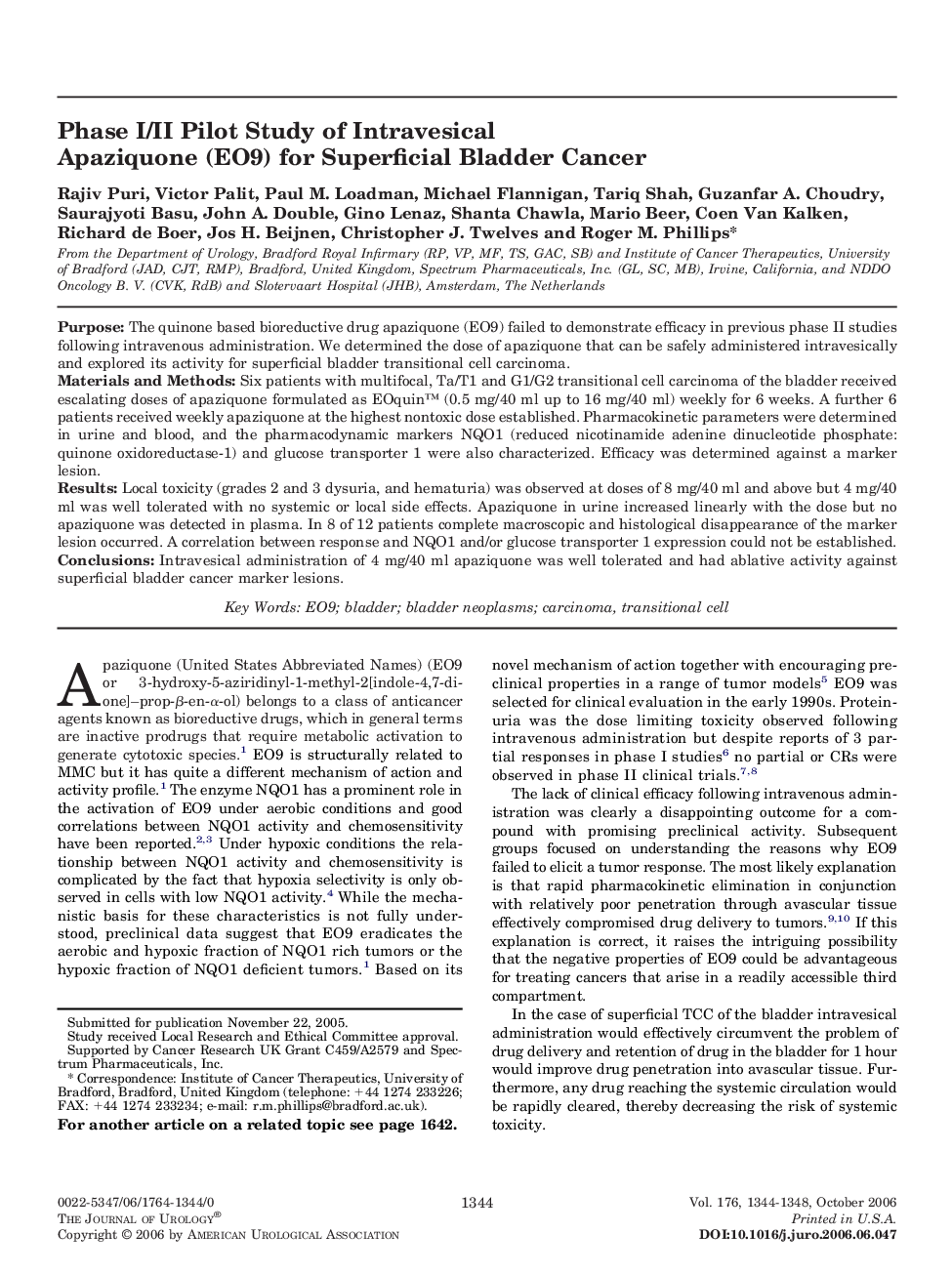| Article ID | Journal | Published Year | Pages | File Type |
|---|---|---|---|---|
| 3879892 | The Journal of Urology | 2006 | 5 Pages |
PurposeThe quinone based bioreductive drug apaziquone (EO9) failed to demonstrate efficacy in previous phase II studies following intravenous administration. We determined the dose of apaziquone that can be safely administered intravesically and explored its activity for superficial bladder transitional cell carcinoma.Materials and MethodsSix patients with multifocal, Ta/T1 and G1/G2 transitional cell carcinoma of the bladder received escalating doses of apaziquone formulated as EOquin™ (0.5 mg/40 ml up to 16 mg/40 ml) weekly for 6 weeks. A further 6 patients received weekly apaziquone at the highest nontoxic dose established. Pharmacokinetic parameters were determined in urine and blood, and the pharmacodynamic markers NQO1 (reduced nicotinamide adenine dinucleotide phosphate:quinone oxidoreductase-1) and glucose transporter 1 were also characterized. Efficacy was determined against a marker lesion.ResultsLocal toxicity (grades 2 and 3 dysuria, and hematuria) was observed at doses of 8 mg/40 ml and above but 4 mg/40 ml was well tolerated with no systemic or local side effects. Apaziquone in urine increased linearly with the dose but no apaziquone was detected in plasma. In 8 of 12 patients complete macroscopic and histological disappearance of the marker lesion occurred. A correlation between response and NQO1 and/or glucose transporter 1 expression could not be established.ConclusionsIntravesical administration of 4 mg/40 ml apaziquone was well tolerated and had ablative activity against superficial bladder cancer marker lesions.
